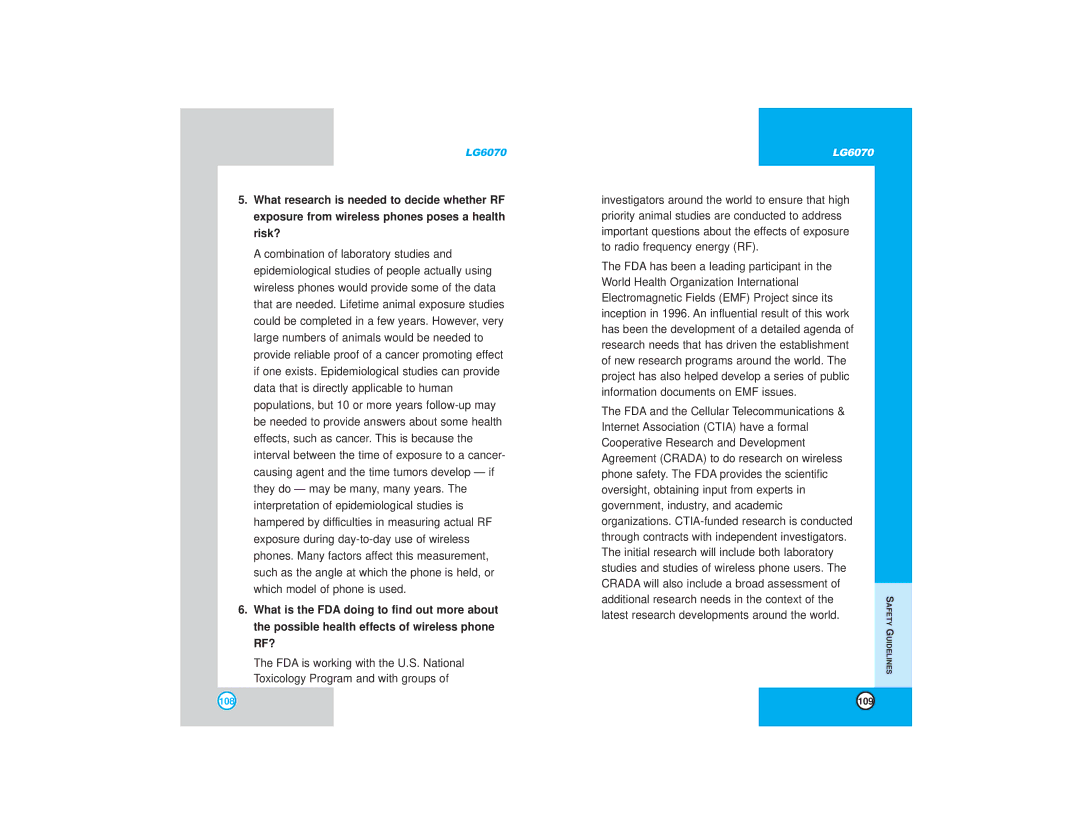
LG6070
5.What research is needed to decide whether RF exposure from wireless phones poses a health risk?
A combination of laboratory studies and epidemiological studies of people actually using wireless phones would provide some of the data that are needed. Lifetime animal exposure studies could be completed in a few years. However, very large numbers of animals would be needed to provide reliable proof of a cancer promoting effect if one exists. Epidemiological studies can provide data that is directly applicable to human populations, but 10 or more years
6.What is the FDA doing to find out more about the possible health effects of wireless phone RF?
The FDA is working with the U.S. National Toxicology Program and with groups of
LG6070
investigators around the world to ensure that high |
| |
priority animal studies are conducted to address |
| |
important questions about the effects of exposure |
| |
to radio frequency energy (RF). |
| |
The FDA has been a leading participant in the |
| |
World Health Organization International |
| |
Electromagnetic Fields (EMF) Project since its |
| |
inception in 1996. An influential result of this work |
| |
has been the development of a detailed agenda of |
| |
research needs that has driven the establishment |
| |
of new research programs around the world. The |
| |
project has also helped develop a series of public |
| |
information documents on EMF issues. |
| |
The FDA and the Cellular Telecommunications & |
| |
Internet Association (CTIA) have a formal |
| |
Cooperative Research and Development |
| |
Agreement (CRADA) to do research on wireless |
| |
phone safety. The FDA provides the scientific |
| |
oversight, obtaining input from experts in |
| |
government, industry, and academic |
| |
organizations. |
| |
through contracts with independent investigators. |
| |
The initial research will include both laboratory |
| |
studies and studies of wireless phone users. The |
| |
CRADA will also include a broad assessment of |
| |
additional research needs in the context of the | SAFETY | |
latest research developments around the world. | ||
| ||
| GUIDELINES |
108 | 109 |
